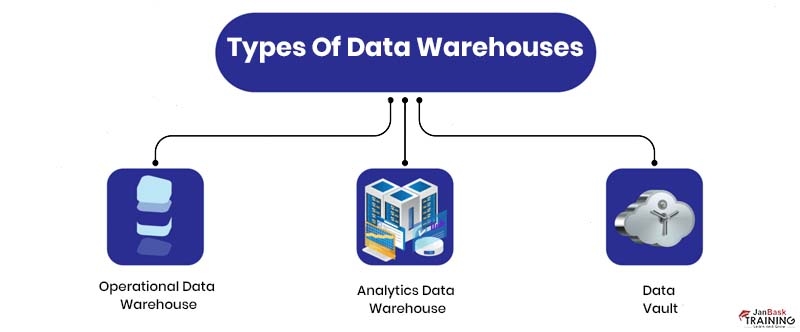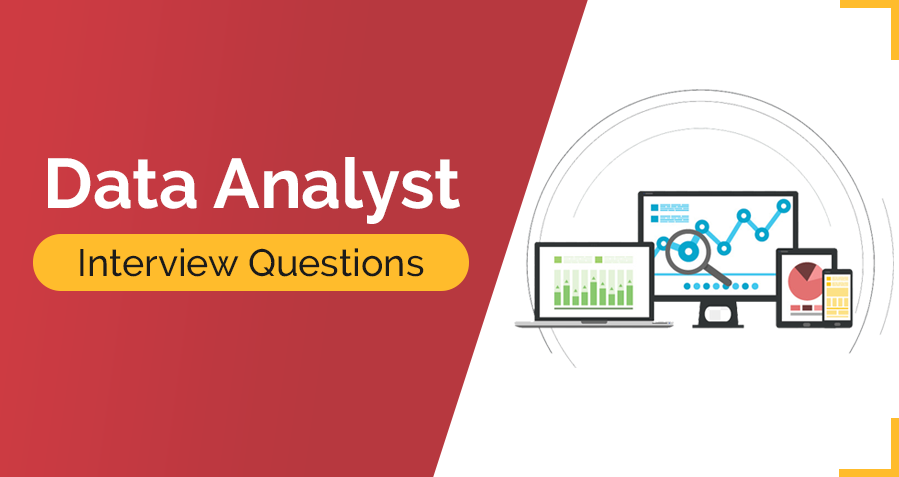Introduction
In today's data-driven business landscape, organizations are inundated with vast amounts of information from numerous sources. Extracting meaningful insights and making informed decisions requires a robust infrastructure to store, manage, and analyse data efficiently. This is where data warehousing comes into play. In this article, we will explore what is a data warehouse, its components, data warehouse concepts and why it holds immense importance in modern business operations. You can also learn about the Data Science Training course and certification from this blog.
What is Data Warehousing?
Data warehousing, also known as an enterprise data warehouse (EDW), is the process of collecting, organizing, and storing large volumes of data from diverse sources in a centralized repository. It serves as a unified, structured, and historical record of an organization's data for analysis, reporting, and decision-making purposes. Data warehouses regularly receive data from transactional systems, relational databases, and other sources.
To support data analysis, data mining, artificial intelligence (AI), and machine learning, a data warehouse, is a system that collects data from several sources into a single, central, consistent data storage. In ways that a typical database cannot, a data warehouse system enables an organisation to do complex analytics on enormous amounts (petabytes and petabytes) of historical data.
Over the past three decades, data warehousing systems have been a component of business intelligence (BI) solutions; but, in recent years, new data types and hosting techniques have caused them to change.
Types Of Data Warehousing?
There are mainly three types of Data warehousing(DWH):

Enterprise Data Warehouse(EDW)
Enterprise Data Warehouse(EDW) is used to store the organization’s centralized data from various sources. It is sued to serve the enterprise’s overall reporting and analyzing data needs. The fundamental goal of an EDW is to give business users access to and analysis of data across various functional areas and systems by providing a comprehensive and consistent view of an organization's data. An EDW eliminates data silos and facilitates cross-functional analysis by unifying data from several sources into a single, unified platform.
Operational Data Store(ODW)
Operational Data Store, also called ODS, is a temporarily staged in data warehouse, when neither the DWH nor online transaction processing(OLTP) supoorts the organization’s needs. Before the data is fed into the data warehouse, it serves as a buffer between the operational systems and the data warehouse, enabling data integration, data cleansing, and data transformation operations.
The data warehouse in ODS is continuously updated. As a result, it is frequently chosen for routine activties like keeping employee records.
Data Mart
A data mart is a type of data warehouse that is concentrated on meeting the demands of a particular department, business, or user group within an organization. It offers a sophisticated view of data pertinent to a specific analytical field or business function.
Data Marts provide pre-aggregated, more structured data that is later adopted to the demands of certain user groups in order to support their reporting, analysis, and decision-making requirements.
Data Warehouse Architecture
Data warehouse architecture refers to the structural design and organization of a data warehouse. A well-designed architecture enables efficient data storage, retrieval, and analysis, facilitating accurate decision-making. In this article, we will discuss the key components of a data ware housing architecture, including data sources, staging area, data storage, and data access.

Data Sources: Data sources refer to the various systems, applications, and platforms that provide data for the warehouse. These sources include transactional databases, operational systems, spreadsheets, external data feeds, and more. Organizations must identify the relevant data sources and determine how to extract, transform, and load data into the warehouse.
Staging Area: The staging area is a temporary storage area where data is extracted, transformed, and loaded before being loaded into the data warehouse. The staging area is useful in detecting and fixing data quality issues, ensuring consistency, and consolidating data from multiple sources.
Data Storage: Data storage refers to the physical storage of data in the warehouse. Data is typically stored in a multidimensional format, consisting of facts (numerical measures) and dimensions (attributes of facts). There are two common data storage architectures, namely, the star schema and the snowflake schema.
- Star Schema: The star schema is the simplest and most commonly used data storage architecture in dataware housing. It consists of a fact table that contains the numerical measures and one or more dimension tables that provide context to the measures. The fact table is surrounded by dimension tables in a star-like shape, hence the name.
- Snowflake Schema: The snowflake schema is a variation of the star schema, where dimension tables are normalized into multiple related tables. This normalization results in a hierarchical structure resembling a snowflake, hence the name.
Data Access: Data access refers to the methods used to retrieve data from the warehouse. There are two primary methods of data access, namely, online analytical processing (OLAP) and data mining.
- Online Analytical Processing (OLAP): OLAP is a multidimensional analysis technique that enables users to analyze data from multiple perspectives. OLAP provides fast query response times and interactive analysis capabilities, making it useful for ad-hoc analysis and reporting.
Data Mining: Data mining involves using statistical and machine learning techniques to identify patterns and relationships in the data. Data mining can be used to perform predictive analysis, identify outliers, and discover hidden patterns.
How Does Data Warehouse Work?
Data warehouse is a technology that allows businesses and organizations to store and analyze vast amounts of data in a structured and efficient manner. The main purpose of a data warehouse is to consolidate data from multiple sources into a single, easy-to-use location for analysis. This can include data from customer transactions, sales, inventory, and more. Data is extracted from various sources, then transformed and cleansed to ensure consistency and quality. Finally, it is loaded into the data warehouse, where it can be accessed by users for reporting and decision-making purposes. With the right tools and strategies in place, data warehouse technology can be a powerful asset for any organization looking to make data-driven decisions and stay ahead of the competition.
Data Warehouse Example and Its Applications In Various Industries
Data Warehousing is used in multiple industry across various fields. In order to acquire insights, enhance decision-making, and promote business performance in certain industry contexts, it is essential to make use of the data kept in a data warehouse. Here are the few examples of industries that use data warehousing:
- Retail Indutsry: A retail data warehouse enables customer analytics by integrating data from various sources to personalise marketing campaigns and enhance customer retention strategies. It also supports inventory management by tracking inventory levels and forecasting demand.
- Financial Service Industry: Through the consolidation of data from diverse sources for market trend analysis, credit risk assessment, and fraud detection, data warehousing aids risk analysis in financial organisations. By storing and analysing transactional data for reporting requirements, it simplifies regulatory compliance. Financial companies can use data warehousing to analyse consumer data for more individualised service, more focused marketing, and greater customer satisfaction.
- Healthcare Industry: An investigation of patient outcomes, disease trends, and treatment efficacy is made possible by the integration of patient data from diverse sources in a healthcare data warehouse. It supports healthcare organisations in reducing costs, increasing operational effectiveness, and optimising resource allocation. By identifying high-risk populations and creating focused interventions for better public health, it also aids population health management.
- Management Industry: Data from supply chain systems are combined and analysed in a manufacturing data warehouse to enable supply chain visibility, demand forecasting, and inventory optimisation. By gathering and examining quality data, it aids in quality control by highlighting problems and enhancing product quality. It also aids in scheduling maintenance, maximising production effectiveness, and monitoring equipment performance.
Data Warehouse Benefits and Challenges
Data warehouses offer numerous benefits to organizations, enabling them to leverage their data effectively for decision-making and strategic planning. Data warehousing offers various ultimate career path for an data scientist or an engineer with competitive salaries in the market, you can about data science career path through various experts and guides.
Benefits of Data Warehousing
Data warehouse application is used across various industry and is used to manage and analyze data stored in a database. Let’s learn some of the other benefits of the usage of data warehouse:
- Enhanced Decision-Making: Data warehouses provide a centralized and integrated view of organizational data. By consolidating data from disparate sources into a single repository, decision-makers can access consistent, accurate, and up-to-date information. This enables informed and data-driven decision-making across various business functions.
- Improved Data Quality: Data quality is a critical factor in decision-making. Data warehouses facilitate data cleansing, standardization, and integration processes, ensuring higher data quality. By eliminating inconsistencies, redundancies, and errors, data warehouses enhance the reliability and trustworthiness of data.
- Historical Analysis and Trend Identification: Data warehouses store historical data over an extended period. This allows organizations to analyze trends, patterns, and historical performance. Historical analysis enables businesses to identify long-term insights, track performance over time, and make strategic decisions based on historical trends.
- Efficient Reporting and Analytics: Data warehouses support efficient reporting and analytics capabilities. With pre-aggregated data and optimized query performance, users can generate reports, perform complex analytical queries, and derive actionable insights quickly. This empowers users to explore data, identify opportunities, and address business challenges effectively.
- Scalability and Flexibility: Data warehouses are designed to handle large volumes of data and accommodate future growth. They can scale horizontally or vertically, depending on the organization's needs. Data warehouses provide flexibility to adapt to changing business requirements and incorporate new data sources without disrupting existing operations.
- Data Integration: Data warehouses integrate data from multiple sources, including operational systems, external feeds, and spreadsheets. This integration enables a holistic view of data, fostering cross-functional analysis and facilitating data-driven collaboration across departments. It eliminates data silos and promotes a unified view of the organization.
- Query Performance: Data warehouses are designed with optimized schemas and indexing techniques, enabling faster query execution. Users can retrieve information promptly, facilitating timely decision-making and efficient data analysis.
- Adapting to Business Changes: Data warehouses allow organizations to incorporate new data sources or modify existing ones seamlessly. This adaptability enables businesses to respond to changing market dynamics and evolving data requirements.
Challenges of Data Warehousing
However, implementing and maintaining a data warehouse also comes with its share of challenges. Let’s learn some of the limitations of a data warehouse:
- Data Integration Complexity: Integrating data from disparate sources with different formats, structures, and quality levels can be complex and time-consuming. Data integration requires careful planning, mapping, and transformation to ensure consistency and compatibility between source systems and the data warehouse.
- Data Governance and Data Quality Management: Maintaining data quality and ensuring data governance within a data warehouse environment can be challenging. Data governance practices, including data ownership, data stewardship, and data quality controls, must be established and enforced consistently to maintain data accuracy and integrity.
- Resource Intensive: Building and maintaining a data warehouse requires significant investments in terms of infrastructure, hardware, software, and skilled personnel. Organizations need to allocate resources for data extraction, transformation, loading, ongoing maintenance, and system administration.
- Data Security and Privacy: Data warehouses contain sensitive and valuable organizational data. Ensuring data security, protecting against unauthorized access, and complying with data privacy regulations become critical challenges. Robust security measures, including access controls, encryption, and data anonymization, need to be implemented to safeguard the data.
- Change Management and User Adoption: Implementing a data warehouse often requires changes in business processes, workflows, and user roles. It may necessitate training users on new reporting and analytics tools. Change management efforts are essential to ensure smooth user adoption and maximize the benefits of the data warehouse.
Evolving Business Requirements: Business requirements are dynamic, and the data warehouse should adapt to changing needs. Accommodating evolving data sources, adding new dimensions, or modifying the data model can be challenging and require careful planning to avoid disruptions to existing data and processes.
Conclusion
A Data warehouse serves as a central repository that consolidates data from various sources and provides a unified view for analysis and reporting. It plays a crucial role in modern businesses by enabling informed decision-making, improving data quality, and supporting efficient data retrieval and analysis.
So if you wish to work as a Business Intelligence(BI) professional or want to learn about data warehousing or datawarehouse concepts in depth to enhance the performance of your organization, you may find some exciting career opportunities, such as data architects, database administrators, or business analysts. If you want to pursue a career in data science, you can consider enrolling for Data Science Online Course and Training such as Janbask or others.
FAQ’s
Q1: What is data warehousing?
Ans:- Data warehousing is the process of collecting, organizing, and storing large amounts of structured and unstructured data from various sources to facilitate efficient analysis and reporting. For more you can check out the data warehouse concepts with examples shared in the blog above.
Q2: Why is data warehousing important?
Ans:- Data warehousing allows organizations to centralize their data, making it easier to access and analyze. It enables businesses to gain valuable insights, make informed decisions, and improve overall operational efficiency.
Q3: What are the key components of a data warehouse?
Ans:- A data warehouse typically consists of three main components: the data source, the data integration layer, and the data presentation layer. The data source includes various systems where data is collected, the integration layer consolidates and transforms the data, and the presentation layer provides tools for analysis and reporting.
Q4: What is the difference between a data warehouse and a database?
Ans:- While a database is designed for transactional processing, a data warehouse is optimized for analytical processing. A data warehouse stores historical data from multiple sources and is structured to support complex queries and data analysis, whereas a database is focused on day-to-day operations and transactional tasks.
Q5: What are the key concepts of data warehousing?
Ans:- Data warehousing concepts form the foundation of data warehousing and are crucial for building effective and efficient data warehouse systems. Data warehousing involves various essential concepts, including:
- Data Integration
- Data Modeling
- ETL (Extract, Transform, Load)
- OLAP (Online Analytical Processing)
- Data Mart.
Data Analyst Course
Upcoming Batches
Trending Courses
Cyber Security
- Introduction to cybersecurity
- Cryptography and Secure Communication
- Cloud Computing Architectural Framework
- Security Architectures and Models
Upcoming Class
6 days 25 Jul 2025
QA
- Introduction and Software Testing
- Software Test Life Cycle
- Automation Testing and API Testing
- Selenium framework development using Testing
Upcoming Class
-1 day 18 Jul 2025
Salesforce
- Salesforce Configuration Introduction
- Security & Automation Process
- Sales & Service Cloud
- Apex Programming, SOQL & SOSL
Upcoming Class
4 days 23 Jul 2025
Business Analyst
- BA & Stakeholders Overview
- BPMN, Requirement Elicitation
- BA Tools & Design Documents
- Enterprise Analysis, Agile & Scrum
Upcoming Class
6 days 25 Jul 2025
MS SQL Server
- Introduction & Database Query
- Programming, Indexes & System Functions
- SSIS Package Development Procedures
- SSRS Report Design
Upcoming Class
6 days 25 Jul 2025
Data Science
- Data Science Introduction
- Hadoop and Spark Overview
- Python & Intro to R Programming
- Machine Learning
Upcoming Class
-1 day 18 Jul 2025
DevOps
- Intro to DevOps
- GIT and Maven
- Jenkins & Ansible
- Docker and Cloud Computing
Upcoming Class
0 day 19 Jul 2025
Hadoop
- Architecture, HDFS & MapReduce
- Unix Shell & Apache Pig Installation
- HIVE Installation & User-Defined Functions
- SQOOP & Hbase Installation
Upcoming Class
-1 day 18 Jul 2025
Python
- Features of Python
- Python Editors and IDEs
- Data types and Variables
- Python File Operation
Upcoming Class
6 days 25 Jul 2025
Artificial Intelligence
- Components of AI
- Categories of Machine Learning
- Recurrent Neural Networks
- Recurrent Neural Networks
Upcoming Class
-1 day 18 Jul 2025
Machine Learning
- Introduction to Machine Learning & Python
- Machine Learning: Supervised Learning
- Machine Learning: Unsupervised Learning
Upcoming Class
6 days 25 Jul 2025
Tableau
- Introduction to Tableau Desktop
- Data Transformation Methods
- Configuring tableau server
- Integration with R & Hadoop
Upcoming Class
-1 day 18 Jul 2025


























Ronan Wright
The blog was super informative for me. It is perfect for someone who is looking in detail about data warehousing and concepts.
JanbaskTraining
Janbask: Thank you for your kind words and support!
Karson Lopez
An extremely researched and nicely curated blog. Please write more about career choices in the same area. Thankyou Janbask!
JanbaskTraining
Janbask: Thank you for your comment and for joining our community.
Arlo Hill
I enjoyed every bit this blog about what is data warehouseing, but I am looking for more information on Data Science Near Me Courses or certifications, can you write more about that?
JanbaskTraining
Janbask: Thank you for your comments.
Tobias Scott
Hi, Great article! Learned a lot about key concepts of data ware housing!
JanbaskTraining
Janbask: Thank you for your kind feedback.
Brady Green
Thanks for this amazing post. The blog provided all the information related to data warhousing concepts that I needed to know, but can you elaborate more on career choices in data warehousing.
JanbaskTraining
Janbask: Glad you enjoyed the blog.Thank you for the feedback.